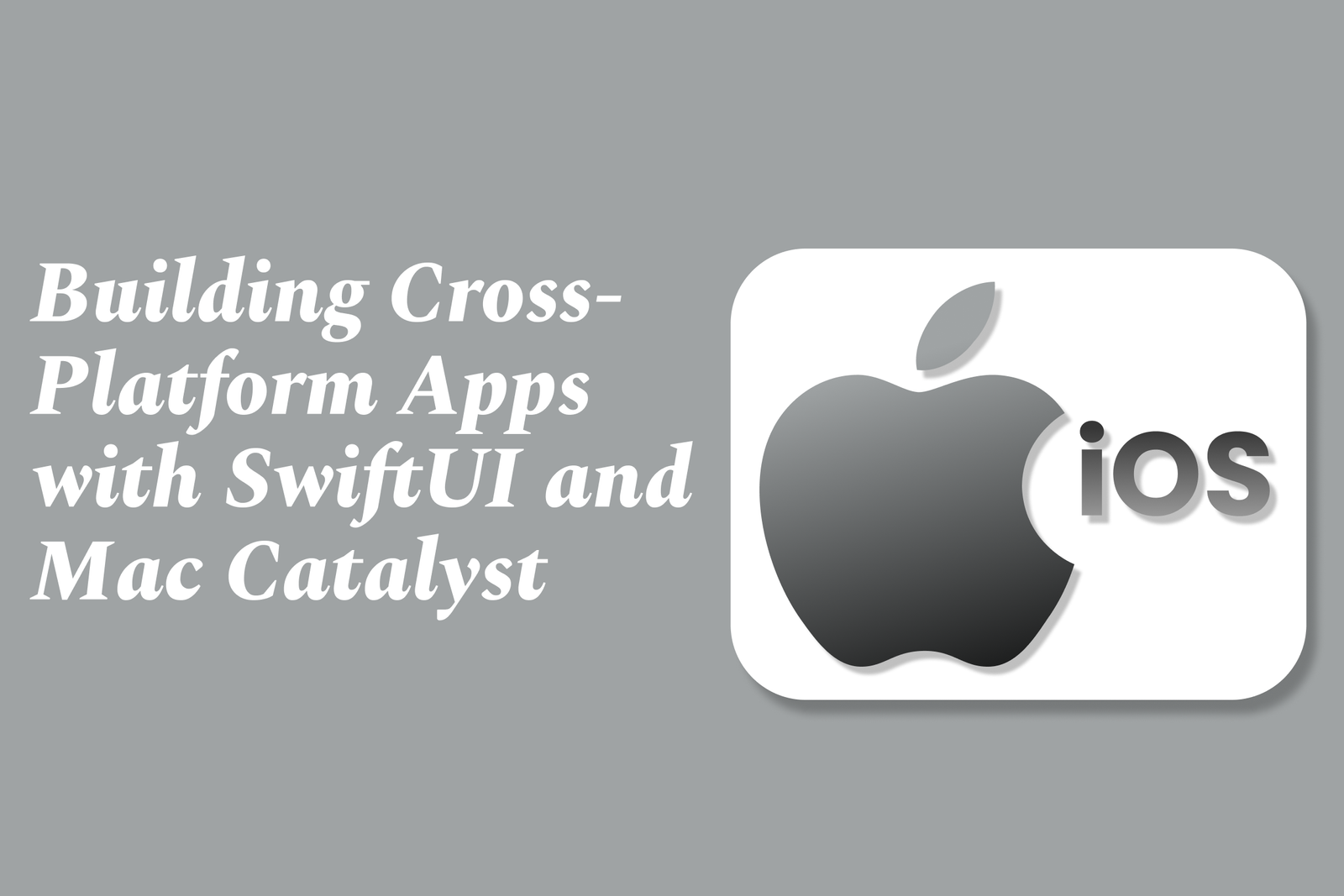Building Cross-Platform Apps with SwiftUI and Mac Catalyst
Building cross-platform apps with SwiftUI and Mac Catalyst lets developers create a single codebase that runs seamlessly on iOS, iPadOS, and macOS, combining SwiftUI’s unified UI framework with Mac Catalyst’s ability to bring iPad apps to the Mac efficiently.
Building Cross Platform Apps with SwiftUI and Mac Catalyst
1 ) Introduction to Cross Platform Development with SwiftUI and Mac Catalyst
SwiftUI allows developers to build apps that run across all Apple platforms using a single set of tools and APIs.
Mac Catalyst enables iPad apps to run on macOS, bridging the gap between iOS and Mac apps by sharing codebases.
2 ) Challenges of Using Mac Catalyst
Developers often face difficulties due to differences in platform specific APIs, requiring conditional code (#if targetEnvironment(macCatalyst)) and rewrites for macOS.
Managing these exceptions can be complex and reduce development enjoyment.
Once a Catalyst app version is published on the Mac App Store, it cannot be removed independently without also removing the app across all stores.
Publishing a Catalyst app disables the availability of the “Made for iPad” app version on macOS, limiting flexibility for users and developers.
3 ) SwiftUI: A More Unified Cross Platform Approach
SwiftUI uses declarative syntax to define user interfaces that work across Apple devices with minimal code changes.
It supports reusable components like text, images, buttons, and stacks with powerful modifiers for styling and layout.
SwiftUI applications benefit from live previews in Xcode, enabling rapid prototyping and seamless UI updates.
Although it facilitates cross platform UI development, some platform specific tailoring is still necessary for optimal user experience on macOS versus iOS.
4 ) Capabilities and Provisioning for Mac Catalyst Apps
Mac Catalyst apps run in a sandbox environment with capabilities (entitlements) that must be enabled via the Apple Developer Account provisioning profiles.
Proper setup involves creating signing certificates, explicit App IDs matching the bundle identifier, and provisioning profiles with necessary app services.
Integrating capabilities ensures apps have access to required functionalities, extending beyond the default sandbox limitations.
5 ) Best Practices and Developer Tools
To start building cross platform apps with SwiftUI and Mac Catalyst, developers should install Visual Studio or Xcode with relevant templates.
Using tools like IntelliSense and hot reload speeds up app development.
Testing on real devices and platform specific emulators helps validate the app performance and appearance.
Developers should be prepared for platform specific adjustments and consider the tradeoffs between cross platform code sharing and native experience quality.
Summary:
While SwiftUI and Mac Catalyst offer robust paths to building cross platform Apple applications with significant shared codebases, developers must navigate platform API differences and deployment constraints, particularly with Mac Catalyst’s current limitations on removing Mac specific versions and its impact on using the “Made for iPad” app on macOS. SwiftUI provides a powerful, unified UI framework with quick iteration capabilities, but platform customization remains important for polished apps. Proper provisioning and capability management are essential when deploying Mac Catalyst apps to ensure needed system access within Apple’s sandboxing environment.
https://justacademy.in/news-detail/flutter-sdk-updates-in-july-2025
https://justacademy.in/news-detail/react-native-0.75?s-most-exciting-features-?-full-breakdown
https://justacademy.in/news-detail/how-react-native-is-powering-the-next-wave-of-social-apps
https://justacademy.in/news-detail/react-native-vs-flutter:-hiring-trends-in-india
https://justacademy.in/news-detail/android-auto-updates-and-new-features
Related Posts
Java supports GDPR and data privacy by enabling secure data handling through encryption, controlled access, and precise data management. It allows developers to minimize PII exposure, ensure data confidentiality, and design workflows that comply with data protection regulations effectively.
Java code quality tools have evolved to include advanced static analysis, integrated security checks, and AI-powered code reviews. These updates help developers detect bugs, enforce coding standards, and enhance security, streamlining the development process and improving overall code reliability.
Java remains a cornerstone in big tech companies, evolving with modern features like records, pattern matching, and virtual threads. Its robust ecosystem, enhanced performance, and growing AI integrations keep it vital for both legacy systems and innovative new projects.
Java and CI/CD pipeline optimizations streamline Java application development by automating builds, tests, and deployments. They improve efficiency through parallelization, caching, and secure secrets management, enabling faster feedback loops and more reliable, scalable software delivery.
Java supports modern cryptography standards through its flexible Java Cryptography Architecture (JCA), enabling integration of advanced algorithms like AES, EdDSA, and post-quantum tools. Libraries like Bouncy Castle offer FIPS-certified, hardware-accelerated implementations for secure development.
Java 23 enhances record patterns by enabling concise, direct destructuring of record components within pattern matching, simplifying type checks and data extraction. This improvement boosts code readability and expressiveness by reducing boilerplate in handling immutable data classes.
Java remains a top choice for mobile app backends, powering scalable, secure, and high-performance server-side solutions. Latest trends include cloud-native microservices, reactive programming, and enhanced JVM optimizations, enabling efficient, flexible, and robust mobile backend development.
Java SE 24 and LTS Java SE 21 offer enhanced features and performance, while Apache Spark 4.0.0 introduces Scala 2.13 support and advanced ML and SQL capabilities. Together, they empower developers to build scalable, high-performance data applications with modern tools.
JUnit 5 modernizes Java testing with a modular architecture, improved assertions, and seamless Java 8+ support. Beyond JUnit, tools like Mockito and AssertJ enhance mocking and assertions, creating a powerful, flexible ecosystem for writing clean, efficient Java unit tests.
Java plays a pivotal role in cloud automation tools by providing a robust, platform-independent language used to build scalable automation frameworks like Jenkins and Selenium, enabling efficient CI/CD pipelines, testing, and orchestration across diverse cloud environments.










